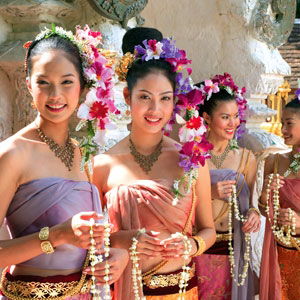Yuan

The Yuan (Lanatai, Lao, Youanne, Youon, Yun) are Tai speakers who inhabit primarily the Chiang Mai region of northern Thailand. They numbered 6,000,000 in Thailand in 1983, and there were 3,000 to 5,000 in Laos in 1962. They share with the Lao, Khün, Lü, and Nüa a complex of cultural traits associated with northern Pali-language Buddhism (script, polite terms, temple architecture). Although assimilating to the national culture, the Yuan may be distinguished from other Thais by their long cultural and historical ties to the Mekong region. The Yuan may also be distinguished from the Lao of northeastern Thailand in that the former once tattooed their bellies, and by dialectal differences.
In the middle and late nineteenth century, although ostensibly under the rule of the king of Siam, the Yuan of Chiang Mai were actually under the absolute control of the Chiang Mai prince. The landed nobility came to his court once a year to offer their allegiance. Well into the twentieth century, the nobility imposed limitations on the property and personal rights of farmers and artisans, including corvée and military conscription. Also, farm products and manufactured items were taxed and requisitioned. (In one ironworking vil1age, for example, the tax was to be paid in the form of elephant chains and cooking pots). Slavery was still extant in the nineteenth century. Warfare and resettlement caused massive social dislocations. There was, as well, great exposure to external influences in the form of trade. Annual Chinese trade caravans ran from Yunnan to Chiang Mai, Moulmein, and back. The Yuan operated trade caravans, which included cattle, to Burma. In addition, the river was an important trade link with Bangkok and other downriver settlements.
Bibliography
Freeman, John H. (1910). An Oriental Land of the Free. Philadelphia: Westminster Press.
McGilvary, Daniel (1912). A Half Century among the Siamese and the Lao. New York and London: Fleming Revell.
Seidenfaden, Erik (1958). The Thai Peoples. Bangkok: Siam Society.
Sharp, Lauriston, Hazel M. Hauck, Kamol Janlekha, and Robert B. Textor (1953). Siamese Rice Village: A Preliminary Study of Bang Chan, 1948-1949. Bangkok: Cornell Research Center.
